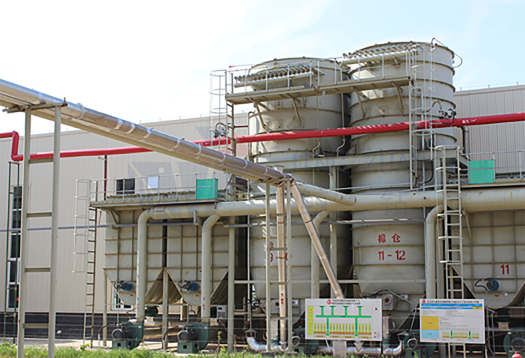
Nov . 25, 2024 08:35 Back to list
hydroxyethyl cellulose solubility in water
Understanding Hydroxyethyl Cellulose Solubility in Water
Hydroxyethyl cellulose (HEC) is a widely used polymer that finds application in various industries, including pharmaceuticals, cosmetics, food production, and construction. It is derived from cellulose, the most abundant organic polymer on Earth, through a chemical process that introduces hydroxyethyl groups into its structure. This modification enhances the solubility and versatility of cellulose, making HEC a valuable ingredient in many formulations.
Solubility Characteristics
One of the most significant attributes of hydroxyethyl cellulose is its solubility in water. Under the right conditions, HEC can dissolve in cold or warm water, forming a clear, viscous solution. Its solubility is influenced by various factors such as the molecular weight of the polymer, temperature, concentration, and the presence of electrolytes.
The molecular weight of HEC varies widely, typically ranging from 50,000 to 1,500,000 daltons. Higher molecular weight HEC tends to exhibit greater viscosity but may require higher temperatures or longer mixing times to fully dissolve. Conversely, lower molecular weight HEC dissolves more readily, making it useful in applications where rapid solvation is desired.
Temperature and Concentration Effects
When dissolving HEC in water, temperature plays a crucial role. Increasing the temperature generally enhances the solubility of HEC. Hot water tends to promote better dissolution due to increased molecular motion, allowing the hydroxyethyl groups to interact more effectively with water molecules. Therefore, formulations requiring quick solubility often utilize warm or hot water during the mixing process.
Concentration also affects solubility. While HEC is soluble in water at various concentrations, too high a concentration can lead to difficulties in achieving complete dissolution. As concentration increases, the viscosity of the solution rises, creating a thick mixture that may resist further incorporation of HEC. It is typically recommended to prepare solutions within a certain concentration range to ensure complete dissolution and optimal performance.
hydroxyethyl cellulose solubility in water

Role of Electrolytes
Electrolytes can significantly impact the solubility of hydroxyethyl cellulose in water. When salts or ionic compounds are present, they can interfere with the interactions between HEC and water, potentially reducing its solubility. For example, the presence of divalent cations such as calcium or magnesium ions may lead to precipitation or reduced solvation. Therefore, in formulations where high ionic strength is expected, it is essential to consider the concentration of electrolytes to avoid compromising the solubility of HEC.
Applications of HEC Solutions
Due to its remarkable solubility in water, hydroxyethyl cellulose is employed in various applications. In the pharmaceutical industry, HEC serves as a thickening agent, stabilizer, and controlled-release agent in medications. In cosmetics, it is commonly used in lotions and creams to enhance texture and improve consistency. Additionally, HEC is used in food products as a thickener and stabilizer, contributing to product texture and shelf life.
In construction, HEC plays a critical role in improving the performance of cement and mortar. Its water-holding capacity allows for better workability and adhesion, making it ideal for use in various building materials.
Conclusion
In summary, hydroxyethyl cellulose's solubility in water makes it an indispensable component in a wide range of industries. Understanding the factors that influence its solubility, such as molecular weight, temperature, concentration, and the presence of electrolytes, is crucial for effectively utilizing HEC in formulations. As industries continue to evolve, the importance of water-soluble polymers like hydroxyethyl cellulose is likely to grow, highlighting the need for ongoing research and development in this field. Whether applied in pharmaceuticals, cosmetics, or construction, HEC remains a polymer of choice for creating high-performance products that meet consumer demands.
-
Versatile Hpmc Uses in Different Industries
NewsJun.19,2025
-
Redispersible Powder's Role in Enhancing Durability of Construction Products
NewsJun.19,2025
-
Hydroxyethyl Cellulose Applications Driving Green Industrial Processes
NewsJun.19,2025
-
Exploring Different Redispersible Polymer Powder
NewsJun.19,2025
-
Choosing the Right Mortar Bonding Agent
NewsJun.19,2025
-
Applications and Significance of China Hpmc in Modern Industries
NewsJun.19,2025







